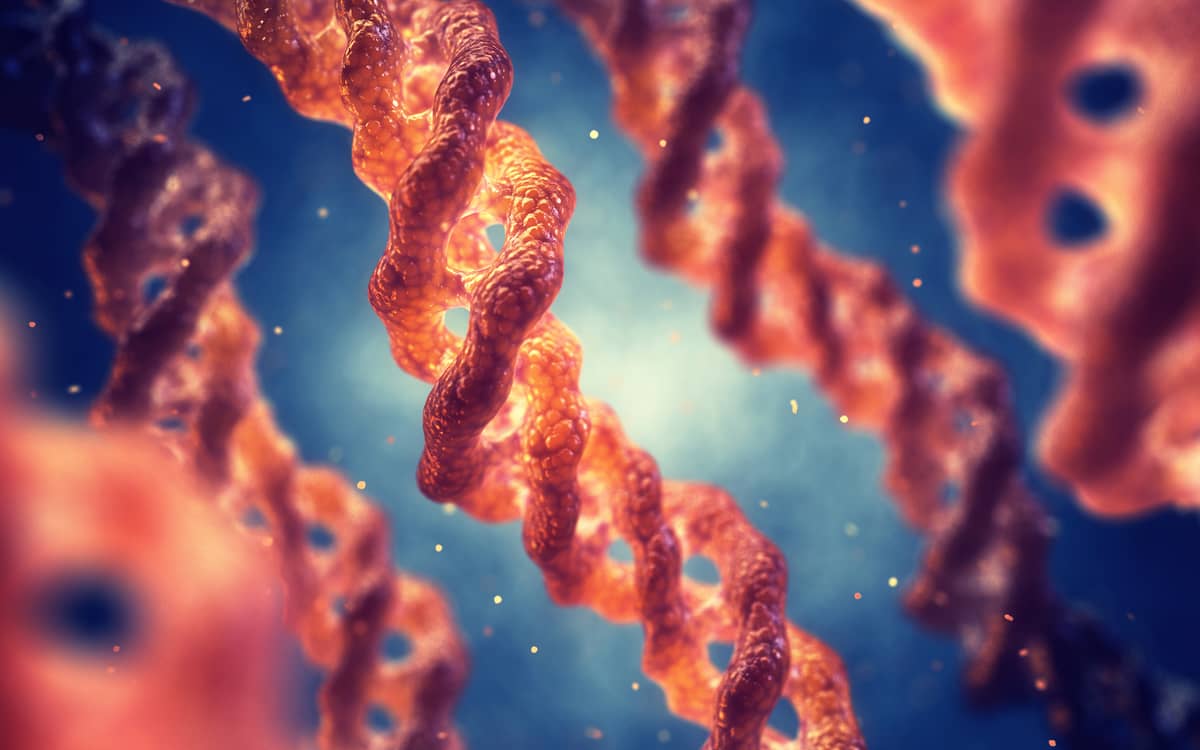Scar Tissue
Scar tissue is the formation of excess or disorganized collagen as a response to injury. It is a maddening over-response that often limits joint motion, creates pain, and requires a significant amount of care. Here is the biology of scarring and potential future cures.

Collagen is the most abundant protein in the human body. It is often a well-organized triple helix structure that —in skin, ligaments, and tendons—forms parallel fibers. These fibers have crosslinks that permit them to slide, expand, stretch, and contract. It is a brilliant adaptation, modified only slightly between animals and humans. When mineral crystals are added, collagen forms into bones and teeth. But when key vitamins such as Vitamin C are missing from one’s diet, an amino acid (proline) cannot add the oxygen necessary to form the normal collagen helix. The disease called Scurvy results.
We most commonly encounter collagen troubles when we get injured. In order to lay down new collagen fibers in an organized fashion, the overstretched or lacerated tissue needs proper stimulation and support. Factors that cause disorganization include immobilization (remember the days of plaster casts post-surgery?); hematoma or swelling in joints (the blood has inflammatory agents that produce irritants to the joint lining); and even the pain of injury (the brain can send signals to cells that may be initially beneficial, but unhelpful in the long run).
Counter-measures to the formation of scar tissue include soft tissue massage (the cells of the tissue have mechanoreceptors that, when stimulated, induce the production of organized collagen); motion (collagen lays down along the lines of stress, so finding just the right amount of stress is helpful—but too much or too little produces scarring); inflammation reduction; swelling reduction; and direct collagen stimulation.
That last measure—direct collagen stimulation—is where much of the research action is today. We have known that we can use electrical current stimulation, magnetic fields, ultrasound, and lasers to provide direction to collagen formation. The non-union of bone fractures has also been successfully treated by a combination of these methods.
What’s new in the mix is the use of growth factors and birth tissues to reduce scar formation and induce healing. This is not really new; a century ago, abdominal surgeons used amniotic membranes to reduce adhesions after surgery on the bowel. But the mechanism of action of these tissues has now been elucidated. Birth tissues, and certain growth factors from human platelets, are potently anti-fibrotic (scar reducing), anti-inflammatory, anti-microbial, and immune-modulatory. Birth tissues specifically act to protect the fetus from scar formation and—since the fetus shares only half the mom’s DNA—from rejection.
When adults are injured, growth factors, and cytokines (recruitment agents in platelets) direct the healing process. Right now, the entire gamut of growth factors is given to injured patients. But by selecting the specific factors unique to each type of injury (an arthritic knee, for example, requires different combinations than a tendon rupture) we will become more successful at preventing scar tissue formation in the first place—and better prepared to treat it if it has already occurred.
This “targeted-specific injection therapy,” provided after almost every significant injury, is in our near future. Additional injections to provide lubrication and nutrition for chronically injured joints and arthritis are already happening and will be optimized. Scar tissue represents our failure to successfully intervene. Guiding the healing and feeding of the joints is the new ounce of prevention.
